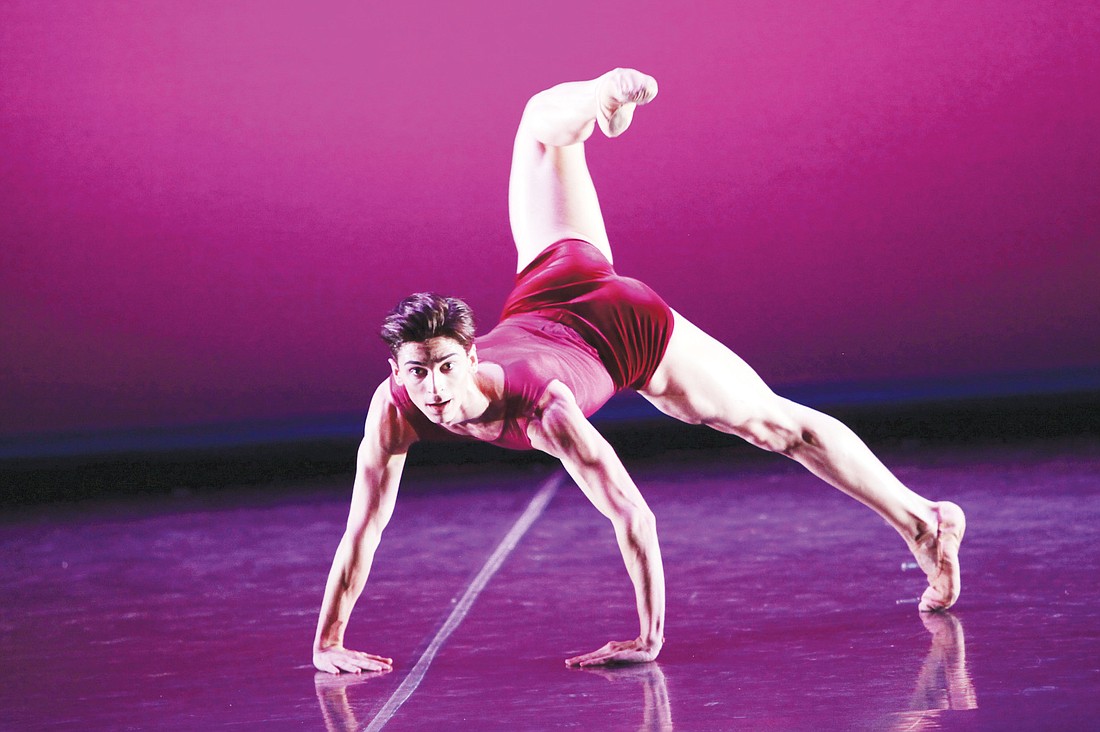- November 26, 2024
-
-
Loading

Loading

“Theatre of Dreams” is always one of this critic’s favorite shows of the Sarasota Ballet season. The Sarasota Ballet’s own dancers get to choreograph and produce their own pieces starring their colleagues. It’s an incredible glimpse into each dancer’s unique creativity that stretches beyond their own amazing performing and dancing abilities.
This year’s lineup of choreographers — Ricardo Graziano, Kate Honea, Jamie Carter, Ricki Bertoni and Logan Learned — did not disappoint. Each dancer’s piece was entirely different from the other in theme, type of dance and music, which created a wonderful and varied program that appealed to all tastes of the audience. An added bonus this year was every piece was performed with live music; some pieces had the musicians on stage with the dancers, making it an evening of the utmost delight.
Both the dancer choreographers and the dancers performing their choreography are to be admired. Remember that just two weeks ago the entire company was performing Sir Frederick Ashton’s full-length story ballet, “La Fille mal Gardée.” And, voila! — they’ve turned around five new world premieres. Now we know why they all are so thin. That is called serious work ethic.
Just as the entire show gives a peek into each dancer’s creative process, Learned’s ballet, “Scene de Ballet,” set to Charles Auguste de Beriot’s “Scene de Ballet, Op. 100,” was a glimpse into what a day at work for the Sarasota Ballet might be like. Learned weaved humor through his choreography. The entire cast was spot on and maybe even a little type-casted as well. The cast included dedicated dancer Rita Duclos who wanted to practice at every turn. Honea depicted the ballet diva perfectly, while Elizabeth Sykes was the naïve newbie, hoping to get the attention of the prince charming, Bertoni.
Carter demonstrated for the second year in a row that he is adept at the neo-classical style reminiscent of George Balanchine. With a large cast of females, “Concordium,” set to George Rochberg’s “String Quartet No. 5,” included a variety of interesting formations. The choreography was full of long legs, lines and numerous developpés. Ryoko Sadoshima blossomed in her role leading the first movement with Bertoni. She demonstrated a new-found maturity not only in her dance technique, but that of stage presence as well. The second movement featured Learned and his three blond partners Honea, Sara Scherer and Anais Blake. And it seems as though Carter has found a perfect muse in Christine Peixoto, who performed a perfect pas de deux with David Tlaiye.
Veering from her usual spunky story ballets, Honea choreographed a lovely non-story piece, “Baroque and Blues,” set to Claude Bolling’s music of the same name. As the title suggests, the music was a mixture of classical and jazzy themes, which Honea perfectly translated into her choreography. The entire cast, which was comprised of eight women, four men and the leading couple of Duclos and Carter, seemed to delight in their own dancing. There were many broad smiles on stage. Carter did an exceptional job as the lead cavalier and danced with just the right amount of male bravura.
Bertoni is probably the quirkiest one of this choreographer crew. Last year he debuted his choreographic skills with “Too Hip to be Square” — an electronic pop-contemporary piece. This year he turned more Broadway with “Ragtop” set to Scott Joplin’s music of the same name. The cast, with seven women dressed in all black with white gloves and brown blunt-cut bob wigs and five men, danced a fabulously entertaining piece that included tricks, humor and inventive choreography.
The evening concluded with Ricardo Graziano’s “Valsinhas,” set to Franz Schubert’s “24 Valses Sentimentales.” Graziano’s choreographic skills are obviously being honed here at the Sarasota Ballet with many of his works from neoclassic to dramatic to this year’s contemporary piece. His talent is ever evident. “Valsinhas” included a cast of five men that alternated performances with a cast of five women. With Jonathan Spivey playing on the piano, the five men performed 24 mini pieces that varied between solos and different divertissements. The movements were geometric, using different isolated movements and seemed to be very much inspired from working with Dominic Walsh.
The audience delighted in every piece and rightly so. It was a magical and fun end to the season. What’s more exciting is the first show to open the 2013-2014 season is next year’s version of “Theatre of Dreams.”